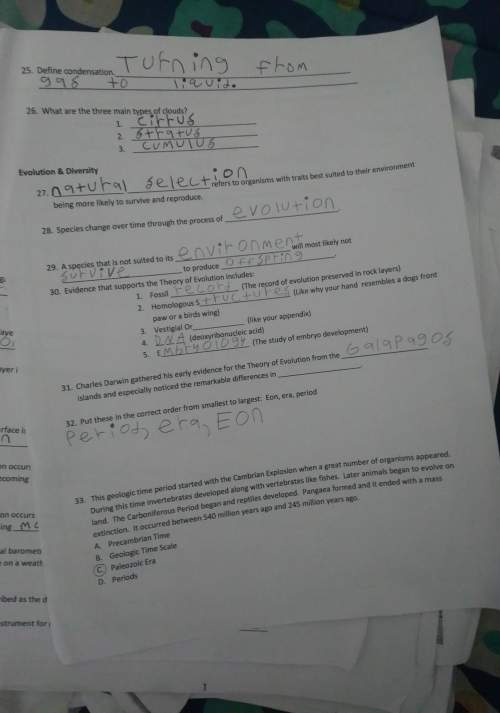
Physics, 05.10.2019 07:20 michellemonroe012305
Abox slides on an inclined plane (=40°) that has friction (=0.43) which causes the box to slide with a constant velocity of 3 m/s. the box reaches the bottom and continues to slide across a horizontal surface with friction (=0.34) until coming to rest five meters from the base of the ramp. what is the length of the ramp that the box slid down?
the answer is that the length of the ramp is 4m, but i don't see how to get there. since the box is sliding down the ramp at a constant speed, there is no net force acting on the box, which means the net work done on the ramp is zero. the energy the box has at the bottom of the ramp doesn't equal the work done to travel 5 meters from the bottom of the ramp.
?

Answers: 3


Other questions on the subject: Physics

Physics, 21.06.2019 17:20, lamwil9432
When an object moves in uniform circular motion, the direction of its acceleration is a) in the same direction as its velocity vector. b) in the opposite direction of its velocity vector c) is directed toward the center of its circular path. d) is directed away from the center of its circular path. e) depends on the speed of the object.
Answers: 1

Physics, 21.06.2019 17:50, genyjoannerubiera
In the image, the arrow is pointing to a celestial object. which attribute disqualifies the object from being a planet?
Answers: 2

Physics, 22.06.2019 03:00, BeautyxQueen
Which of the following is not a part of the respiratory system? a. pharynx b. trachea c. pancreas d. larynx hurrim timed
Answers: 1

Physics, 22.06.2019 07:30, anonymous1813
Some material consisting of a collection of microscopic objects is kept at a high temperature. a photon detector capable of detecting photon energies from infrared through ultraviolet observes photons emitted with energies of 0.3 ev, 0.5 ev, 0.8 ev, 2.0ev, 2.5ev, and 2.8ev. these are the only photon energies observed. (a) draw and label a possible energy-level diagram for one of the microscopic objects, which has four bound states. on the diagram, indicate the transitions corresponding to the emitted photons. explain briefly. (b) would a spring–mass model be a good model for these microscopic objects? why or why not? (c) the material is now cooled down to a very low temperature, and the photon detector stops detecting photon emissions. next, a beam of light with a continuous range of energies from infrared through ultraviolet shines on the material, and the photon detector observes the beam of light after it passes through the material. what photon energies in this beam of light are observed to be significantly reduced in intensity (“dark absorption lines”)? explain briefly.
Answers: 3
You know the right answer?
Abox slides on an inclined plane (=40°) that has friction (=0.43) which causes the box to slide with...
Questions in other subjects:

Mathematics, 22.07.2019 17:30




Health, 22.07.2019 17:30

Mathematics, 22.07.2019 17:30


History, 22.07.2019 17:30

English, 22.07.2019 17:30

English, 22.07.2019 17:30




